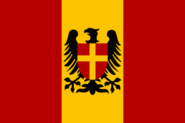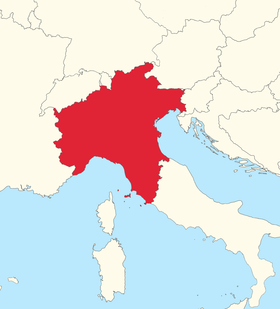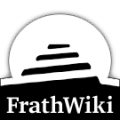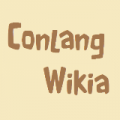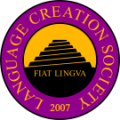Main Page/Harākti: Difference between revisions
No edit summary |
No edit summary |
||
| (2 intermediate revisions by the same user not shown) | |||
| Line 12: | Line 12: | ||
| | | | ||
|- | |- | ||
|style="text-align:center;"|''' | |style="text-align:center;"|'''Ki tepu:''' {{Bar languages/Harākti}} | ||
|- | |- | ||
| | | | ||
| Line 19: | Line 19: | ||
| class="MainPageBG" style="width:55%; border:1px solid #cef2e0; background:#f5fffa; vertical-align:top; color:#000;" | | | class="MainPageBG" style="width:55%; border:1px solid #cef2e0; background:#f5fffa; vertical-align:top; color:#000;" | | ||
{| id="mp-left" style="width:100%; vertical-align:top; background:#f5fffa;" | {| id="mp-left" style="width:100%; vertical-align:top; background:#f5fffa;" | ||
| style="padding:2px;" | <h2 id="mp-tfa-h2" style="margin:3px; background:#cef2e0; font-size:120%; font-weight:bold; border:1px solid #a3bfb1; text-align:left; color:#000; padding:0.2em 0.4em;"> | | style="padding:2px;" | <h2 id="mp-tfa-h2" style="margin:3px; background:#cef2e0; font-size:120%; font-weight:bold; border:1px solid #a3bfb1; text-align:left; color:#000; padding:0.2em 0.4em;">Līshahit danghāh</h2> | ||
|- | |- | ||
| style="color:#000;" | <div id="mp-tfa" style="padding:2px 5px">{{Front/featured}}<br/><center>'''[[:Category:Featured|Previously featured languages]]''' • '''[http://linguifex.com/index.php?title=Special:WikiForum&thread=45 Nominate a featured language]'''</center></div> | | style="color:#000;" | <div id="mp-tfa" style="padding:2px 5px">{{Front/featured}}<br/><center>'''[[:Category:Featured|Previously featured languages]]''' • '''[http://linguifex.com/index.php?title=Special:WikiForum&thread=45 Nominate a featured language]'''</center></div> | ||
| Line 28: | Line 28: | ||
| style="color:#000; padding:2px 5px 5px;" | <div id="mp-dyk"><!--{{Front/did you know}}-->The Linguifex wiki supports KreativeKorps initiative on assigning ISO-codes for conlangs, the ConLang Code Registry! Add your language to the list [http://www.kreativekorp.com/clcr/index.php here]. If your language is on Linguifex, let [[Linguifex:Administrators|us]] know!</div> | | style="color:#000; padding:2px 5px 5px;" | <div id="mp-dyk"><!--{{Front/did you know}}-->The Linguifex wiki supports KreativeKorps initiative on assigning ISO-codes for conlangs, the ConLang Code Registry! Add your language to the list [http://www.kreativekorp.com/clcr/index.php here]. If your language is on Linguifex, let [[Linguifex:Administrators|us]] know!</div> | ||
|- | |- | ||
| style="padding:2px;" | <h2 id="mp-dyk-h2" style="margin:3px; background:#cef2e0; font-size:120%; font-weight:bold; border:1px solid #a3bfb1; text-align:left; color:#000; padding:0.2em 0.4em;"> | | style="padding:2px;" | <h2 id="mp-dyk-h2" style="margin:3px; background:#cef2e0; font-size:120%; font-weight:bold; border:1px solid #a3bfb1; text-align:left; color:#000; padding:0.2em 0.4em;">Ūari</h2> | ||
|- | |- | ||
| style="color:#000; padding:2px 5px 5px;" | <div id="mp-dyk">{{Front/aid}}</div> | | style="color:#000; padding:2px 5px 5px;" | <div id="mp-dyk">{{Front/aid}}</div> | ||
| Line 41: | Line 41: | ||
|- | |- | ||
<!-- PICTURE --> | <!-- PICTURE --> | ||
| style="padding:2px;" | <h2 id="mp-itn-h2" style="margin:3px; background:#cedff2; font-size:120%; font-weight:bold; border:1px solid #a3b0bf; text-align:left; color:#000; padding:0.2em 0.4em;"> | | style="padding:2px;" | <h2 id="mp-itn-h2" style="margin:3px; background:#cedff2; font-size:120%; font-weight:bold; border:1px solid #a3b0bf; text-align:left; color:#000; padding:0.2em 0.4em;">Līshahit esrie</h2> | ||
|- | |- | ||
| style="color:#000; padding:2px 5px;" | <div id="mp-itn">{{Front/picture}}</div> | | style="color:#000; padding:2px 5px;" | <div id="mp-itn">{{Front/picture/Harākti}}</div> | ||
|- | |- | ||
<!-- CREATE A LANGUAGE --> | <!-- CREATE A LANGUAGE --> | ||
Latest revision as of 21:45, 16 April 2014
|
|
|||||||||||||||||||||||||||||||||||||||||||||||||||||||||||||||||||
